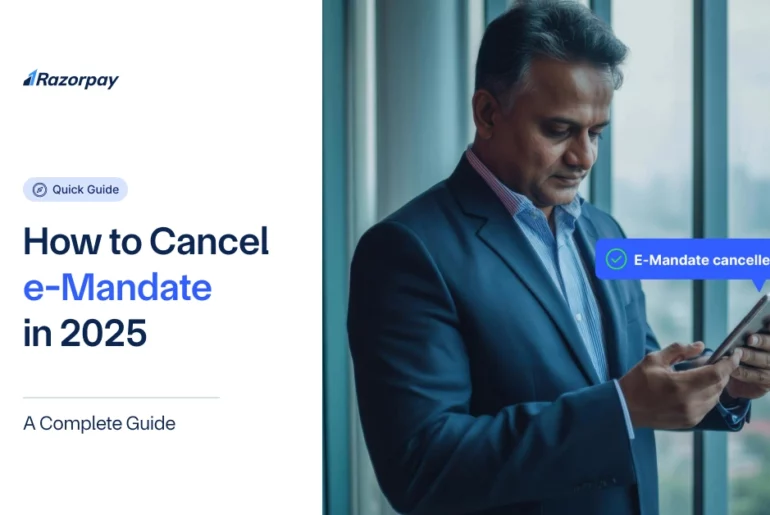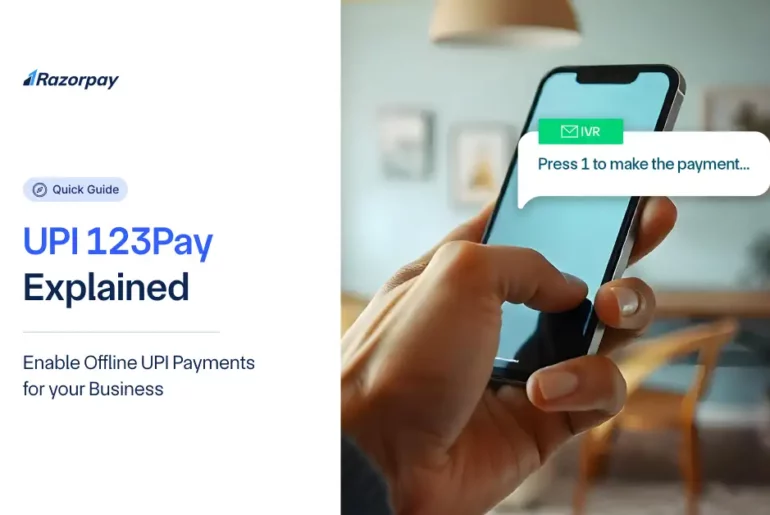Table of Contents
What is a Recurring Invoice?
A recurring invoice is an invoice generated automatically for a customer who has subscribed to recurring services or products. These invoices are sent at regular intervals, such as weekly, monthly, or annually, based on the customer’s subscription terms.
This streamlined process simplifies billing by automatically sending consistent invoices, eliminating the need for clients to manually initiate payments for each billing cycle.
Related Read: How to Send an Invoice? A Step-by-Step Guide
Example of Recurring Invoice
Alex subscribed to Netflix’s Basic plan for $9.99 per month. Every month on the 1st, Netflix generates an invoice for his subscription. The invoice includes the subscription plan, due date (usually the 15th of the same month), and the total amount due. Alex’s Netflix subscription is automatically renewed each month unless he cancels it before the due date. This recurring billing ensures that Alex has continuous access to Netflix’s streaming library while Netflix receives a steady revenue stream.
Recurring Invoice Format
Related Read: What is an Invoice Number and How to Generate One?
Common Use Cases for Recurring Invoices
Recurring invoices are widely used across various industries to enhance billing processes and ensure consistent revenue streams. Some of the most popular applications include:
1. Subscription Services
Recurring invoices are commonly used by subscription-based businesses, such as streaming platforms (e.g., Netflix, Disney+), SaaS providers (e.g., Microsoft 365, Spotify), and online publications, to automate billing for monthly or annual services.
2. Membership Fees
Gyms, fitness centers, and professional organizations rely on recurring invoices to streamline billing for membership fees, ensuring steady cash flow and reducing manual processes.
3. Lease or Rental Agreements
Both residential and commercial landlords use recurring billing for rent payments, providing tenants with predictable costs and landlords with consistent income.
4. Utility Bills
Utility providers—such as electricity, water, and gas—use recurring invoices for long-term contracts to simplify billing and reduce errors.
5. Consultancy and Service Contracts
Businesses offering ongoing consultancy, maintenance, or retainer-based services (e.g., HVAC, IT support) benefit from recurring invoicing for predictable revenue and ease of budgeting.
6. Subscription-Based Products
Recurring billing is essential for subscription-based products like magazines, meal delivery, and other regular replenishment services, offering convenience for both businesses and customers.
How Does a Recurring Invoice Work?
1. Setting Up Recurring Invoices
Businesses can easily set up recurring invoices through their accounting software by selecting the recurring billing option, entering client details, and specifying the products or services to be billed.
This process typically includes setting the invoice amount, billing frequency (e.g., weekly, monthly), and duration.
2. Payments Scheduling
Recurring invoices allow businesses to schedule payments at regular intervals—whether weekly, monthly, or annually to ensure a steady cash flow and offering customers predictable billing cycles.
3. Customer Consent
Obtaining customer consent is essential when setting up recurring invoices.
This ensures clients are aware of and agree to ongoing charges, typically through a signed agreement or electronic confirmation during the setup process.
4. Payment Processing
Once the recurring invoice is established, payments are automatically processed at scheduled intervals.
This reduces administrative effort, lowers the risk of late payments, and guarantees timely collection for services rendered.
5. Invoice Updates
If prices or services change, businesses can easily update the recurring invoice details in their accounting software, ensuring that customers are correctly billed under the new terms.
6. Cancellation Process
Customers should have the flexibility to cancel recurring invoices either through their account settings or by contacting customer support.
This transparency builds trust and enhances customer satisfaction by allowing them to manage their subscriptions as needed.
Related Read: How to Create a Payment Schedule Format That Works
How to Set Up Recurring Invoice Payment Processing? A Step-by-Step Guide
Setting up recurring payment processing entails many critical steps to ensure a pleasant transaction experience for both you and your clients.
STEP 1: Choose the Right Recurring Payment Software
Select a payment processing platform like Razorpay Subscriptions that supports recurring billing, offers strong security, and integrates smoothly with your current systems.
STEP 2: Set Up Customer Billing Information
Securely collect and store your clients billing details, such as credit card numbers or bank information, in strict compliance with data protection regulations like PCI DSS.
STEP 3: Schedule Recurring Payments
For payment schedule, choose a payment frequency (weekly, monthly, or yearly) and set specific payment dates that align with your business needs.
STEP 4: Automate Recurring Invoices
Configure your software to automatically generate and send recurring invoices to customers ahead of each payment, enhancing transparency and reducing manual tasks.
STEP 5: Monitor and Manage Recurring Payments
Regularly review payment transactions and customer accounts to handle any issues promptly, ensuring a smooth process and maintaining customer satisfaction.
Advantages of Raising Recurring Invoices
1. Time and Cost Savings
Recurring invoices save time by automating manual tasks, allowing you to focus on other key aspects of your business. The automation also reduces administrative costs, freeing up resources.
2. Improved Cash Flow
Automated invoice processing ensures that invoices are sent consistently and on time, leading to quicker payments and a healthier cash flow. This helps meet financial obligations and supports business growth.
3. Reduced Errors and Enhanced Professionalism
By automating invoices, you minimize the risk of human error, ensuring accuracy. This adds a layer of professionalism, as clients receive timely and error-free billing, improving your brand image.
4. Better Financial Management
Recurring invoices provide clear visibility into your financials, helping you better manage income, expenses, and projections. Consistent payments make budgeting and long-term planning more efficient.
5. Accelerate Payments
Automating invoicing helps reduce the likelihood of late or missed payments, speeding up the payment cycle and improving overall transaction timelines.
6. Convenience for Both Parties
Recurring invoices offer convenience to both businesses and clients by creating predictable payment cycles. Clients can plan for payments, and you can rely on a steady income stream.
7. Build Strong Customer Relationships
A reliable invoicing system shows commitment to service quality, fostering stronger relationships with clients who appreciate seamless and hassle-free transactions.
Disadvantages of Raising Recurring Invoices
While rising regular bills might help with invoicing, there are a few negatives to consider that may affect your operations.
1. Payment Failures
Even with well-organized recurring billing systems, payment failures can occur if a customer’s card expires or lacks sufficient funds. This can disrupt cash flow and lead to customer dissatisfaction.
2. Tracing and Correcting Errors
Recurring invoices can make it difficult to identify errors, as the same template is sent repeatedly. If a mistake goes unnoticed, it can affect multiple billing cycles. Correcting these errors often requires issuing credit notes or adjustments, complicating accounting processes.
3. Manual Verification
While automation reduces workload, some manual verification is still necessary to ensure accuracy. This can be time-consuming, offsetting some of the efficiency gained from automating invoicing.
4. Budgeting Challenges for Customers
Customers may struggle to track their spending with multiple recurring payments, leading to difficulty in managing their personal finances and potentially causing frustration.
5. Data Security Risks
Handling sensitive customer data, such as payment information, comes with security and compliance challenges. Businesses must ensure robust data protection to avoid breaches and maintain customer trust.
6. Wrong Billing
Automatic billing increases the risk of missing errors, and if these errors span multiple payments, correcting them can be even more complex and time-consuming.
7. Time and Resource Investment
Setting up and maintaining a recurring invoicing system requires significant time and resources upfront. Ongoing management and careful planning are essential to ensure smooth operation and long-term success.
How Can You Determine if Recurring Invoices are Right for Your Business?
Recurring invoices can be a great fit if your business provides regular services or products, such as subscriptions or maintenance.
Here’s the key factors to consider for recurring invoices:
1. Service Consistency
Does your business offer ongoing services or products that require regular billing? If so, recurring invoices can simplify the process.
2. Customer Preferences
Consider whether your customers are comfortable with automated payments. Some may prefer more flexibility, so clear communication is essential.
3. System Compatibility
Ensure your invoicing or accounting software supports recurring invoices and integrates smoothly with your existing systems.
4. Handling Changes
Establish a process for managing pricing changes, cancellations, and payment failures. This helps maintain accuracy and reduces complications.
5. Compliance and Security
Stay compliant with regulations related to recurring billing, such as obtaining customer consent and protecting payment data.
Checklist to Decide on Recurring Invoices
- Do you provide consistent, ongoing services or products?
- Is your revenue model dependent on regular cash flow?
- Are your customers likely to benefit from automated billing?
- Do you bill clients on a regular basis (e.g., monthly, quarterly)?
- Does your accounting software support recurring invoices?
- Do you have a plan for handling changes, cancellations, and failed payments?
- Are you compliant with relevant regulations for billing and data security?
How Razorpay Helps Your Business Set Up with Recurring Invoice Payment Process?
Razorpay Subscriptions offers a comprehensive solution for setting up recurring invoice payment processes. It provides easy integration, customizable billing cycles, multiple payment options, automated invoice generation and collection, a customer portal, robust security, detailed analytics, and excellent customer support. By using Razorpay, businesses can streamline their payment operations, enhance customer experience, and improve overall efficiency.
FAQs
1. Which transactions can be recurring?
Recurring transactions can include invoices, purchase orders, journal entries, payments, sales orders, and bank transfers that are automatically generated and processed at regular intervals. Common examples are monthly utility bills, annual software subscriptions, and membership fees.
2. What types of businesses typically use recurring invoicing systems?
Businesses that provide ongoing services, such as subscription-based services, membership organisations, SaaS companies, education, maintenance services, eCommerce, health and fitness, entertainment, and publications, commonly use recurring invoicing.
3. How often can I schedule recurring invoices?
Recurring invoices can be scheduled weekly, monthly, quarterly, or annually based on the business’s needs and the customer’s subscription terms.
4. What payment methods are typically supported with recurring invoices?
Recurring invoices typically support credit/debit card payments, direct debit, and digital wallets like PayPal or Apple Pay. The payment method is set up with the customer’s account and automatically charged at the scheduled intervals.
5. Are there any legal or compliance considerations when using recurring invoices?
Yes, Businesses using recurring invoices must ensure compliance with consumer protection laws, data privacy regulations, tax laws, and industry-specific guidelines. Consulting with legal and financial experts is essential.



